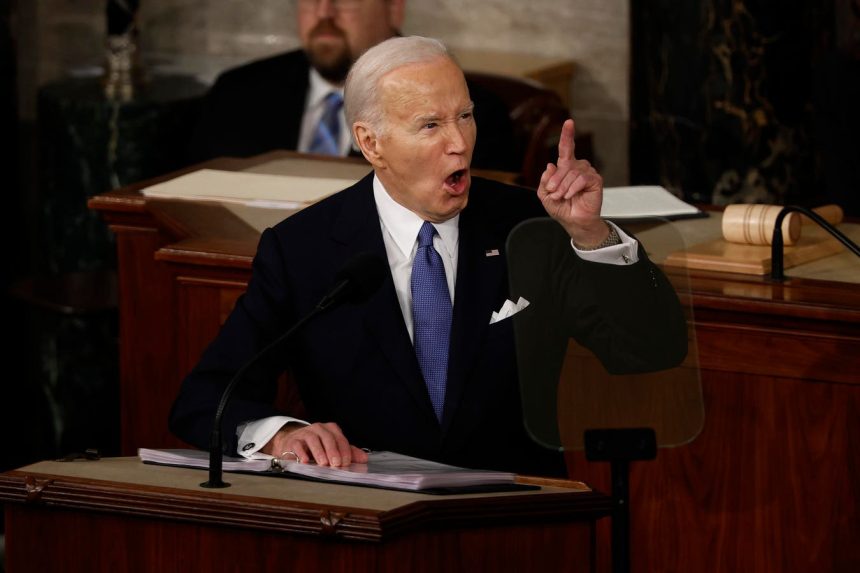President Biden’s 2025 budget proposal, which will double as his presidential campaign platform, includes major proposals aimed at supporting older adults. It would raise taxes to help fund Medicare, increase federal support for Medicaid home-based care, create a federal family leave program for those caring for older adults as well as children, and toughen regulation and inspections of nursing homes. It promises to boost the solvency of Social Security, but doesn’t say how.
A deeply divided Congress won’t adopt any of Biden’s far-reaching initiatives in what remains of this election year. But, as part of a broader package of new social programs, expect them to be included in Biden’s governing agenda starting next year. If he is re-elected, that is.
The challenge, even if Biden wins and Democrats win full control of Congress, will be how he shoehorns all of these ambitious ideas into a large and growing budget deficit. Some costly priorities inevitably will fall by the wayside.
Biden’s budget would address:
Medicare drugs. He’d accelerate Medicare’s ability to negotiate drug prices. In 2022, Congress gave Medicare the ability to negotiate prices but only for 10 drugs starting in 2026, with the number gradually increasing by 15-20 annually from 2027 through 2029. The drug industry has filed multiple lawsuits attempting to block even limited price negotiations under the 2022 law. Biden also would limit Medicare beneficiary co-pays to $2 for a 30-day supply of certain generic drugs.
Medicare sustainability. The program’s Part A hospital insurance trust fund is scheduled to become insolvent by 2031. Biden would improve its finances by raising taxes for high-income workers and by allocating some revenues from another tax to the federal health program. He’d raise the Medicare tax rate on both wages and unearned income from 3.8 percent to 5 percent for those with incomes over $400,000.
He’d close a loophole that allows some high-income business owners to avoid paying Medicare taxes, and shift revenue from the 2010 Net Investment Income Tax into the HI trust fund. Those revenues currently go to the government’s general fund. He’d also allocate any Part B and Part D savings from Medicare prescription drug reforms to the hospital insurance trust fund.
Medicaid home care. Biden would increase federal funding by $150 billion over 10 years for Medicaid Home and Community-Based long-term care Services (HCBS). Early in his Administration, Biden proposed up to $400 billion in new federal money for Medicaid HCBS but neither that plan nor a scaled-back version was approved by a Democratic Congress in 2021 or 2022. States and the federal government generally share Medicaid costs.
Family leave. Biden would try again to create a federal paid family and medical leave program administered by the Social Security Administration. Workers caring for seriously ill family members, as well as newborn or adopted children, would be eligible for up to 12 weeks of leave, and up to three days to leave to mourn the death of a loved one. Biden also renewed his call for employers to provide up to 7 days of paid medical leave for workers to care for their own health or that of family members. Biden was unable to convince Congress to pass a leave program in his first three years in office.
Nursing homes. Biden vows to increase nursing home inspections. The federal government would fund 100 percent of required state surveys starting in 2026, toughen financial penalties for underperforming facilities, require greater disclosure of nursing home ownership, and increase inspections of facilities with serious safety deficiencies. Many states still have not caught up with their inspection backlogs worsened by the pandemic. However, Biden is not asking for much additional funding for the nursing home initiatives.
Older Americans Act. The budget for most non-Medicaid supports for older adults would be increased by about $70 billion. Funding for senior nutrition programs, such as Meals on Wheels, would increase by about $83 billion, or 8 percent. The budgets for nearly all other Older Americans Act programs would be trimmed or frozen at this year’s levels.
Social Security. Biden would increase administrative funding for Social Security, which should improve the agency’s ability to provide services to beneficiaries and applicants. He also vows to boost payroll taxes for high-income people, though the budget documents released yesterday do not say how.
In his 2020 presidential campaign Biden proposed a plan to increase Social Security solvency for about five years but he never pursued those ideas as president. This year, Biden repeatedly has insisted he would make no cuts in program benefits, though unless steps are taken to improve solvency, the government will be able to pay only about 77 percent of promised benefits in about 10 years.
Biden’s plan is ambitious and expensive. If he wins re-election, the question will be: How much of it can he accomplish?
Read the full article here














